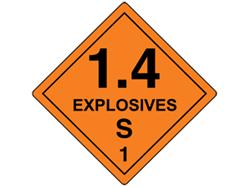Collecting ammunition in Queensland
Storing small arms ammunition
If you’re a shooter, you must comply with relevant legislation and meet your duty of care regarding storing small arms ammunition.
Small arms ammunition refers to ammunition for a firearm, including primers (cap type) used for reloading the ammunition for a shotgun and any firearm with a calibre no more than 25.4mm.
How to store the ammunition
You must store small arms ammunition (SAA):
- in its original packaging, or in packaging or containers designed to protect the ammunition individually
and - in a secure container or on a shelf that unauthorised people can’t access
and - in a secured area.
Protecting SAA individually
Protecting SAA individually means the packaging or container protects every safety cartridge from damage or harm during normal storage, including friction, impact, static, heat in handling the packaging or container, and adjacent things such as chemicals, dangerous goods and water. (This doesn’t include abnormal or emergent situations, such as fire.)
Secure containers
A secure container is a spark-proof container that’s kept closed at all times except when the SAA is placed in or removed from the packaging or container. A spark from an external source can’t enter the secure container when it’s stored and not being handled. (This doesn’t apply to steel packaging or containers.)
Ice-cream containers, take away food containers, glass jars with screw lids, plastic bags with zip-lock seals, coffee tins and similar containers are not acceptable as secure containers. You may use them as inner packaging inside a secure container for storage.
Secure areas
You must store the SAA in a secured area in a separate area from firearms (with different locks and different keys or combinations), unless you’re authorised to do so under the Weapons Act 1990. A secured area might include a drawer, cabinet, cupboard, room or other enclosure that’s locked when no one is around.
More than 10,000 safety cartridges
If you store more than 10,000 safety cartridges in a secured area, you must display a classification sign (class 1.4S) for the cartridges you’re storing. The Australian Standard AS 2187 defines a safety cartridge as ‘a cartridge for small arms weapons or industrial tools which are explosives of Classification Code 1.4S’. A drill, dummy or inert round or cartridge is not a safety cartridge.
The classification sign—at least 100mm square—must be attached as follows:
- if on a drawer—on the outward-facing surface of the drawer
- if on a cabinet—on the exterior surface of the cabinet
- if on a cupboard—on the exterior surface of the cupboard
- if in a room or other enclosure—at each entrance to the room or enclosure

See Explosives Regulation for more definitions and explanations.
Packaging and containers
Original packaging
Original packaging is the retail packaging supplied by the commercial manufacturer and sold over the counter at the retail outlet (e.g. a gun shop).
This packaging should be made from steel, aluminium, ordinary natural wood, plywood, reconstituted wood, fibreboard, cardboard, expanded plastics, solid plastics or in drums with removable head steel, removable head aluminium, plywood, and removable head plastic.
As the original packaging is considered a secure container, you don’t need an additional secure container as well.
Original packaging that you get from retail premises and store at a domestic residence is regarded as a secure container. This may be the inner packaging alone.
Storing for own use
The term ‘in packaging or containers’ applies to storing SAA for own use either:
- by shooters who repackage small arms ammunition from original packaging for any reason
- for shooters who reload and package their own small arms ammunition.
You would acquire this packaging or container for storing SAA, so it is not the original packaging from the commercial manufacturer (not the shooter who reloads for self-use). It does not have to be dangerous goods-approved packaging. The packaging or container must be similar to the original packaging.
No other specific requirements apply if the packaging or container is loaded into a secure container as explained above, or the packaging is a plastic box made for storing ammunition and is stored closed.
Note: A shooter who reloads their own SAA for their own use is a manufacturer. Reloaded SAA doesn’t need to be packed into original packaging (as above).
If the packaging or container meets the requirements of a secure container, you do not need an additional secure container. The requirements are similar in quality and material of construction as the original packaging (see above).
The packaging or containers for SAA need only be similar to the original packaging supplied at retail. The SAA should be:
- packed in good quality packaging that’s strong enough to withstand shocks and loadings during handling and storage
- constructed and closed to avoid losing contents during storage and handling
- properly closed to be a spark-proof container
- encased in packaging that’s clearly marked on the outside surface with the calibre, characteristics of the loaded SAA and maximum quantity of SAA.
Note: In an emergency, responders must be able to identify the contents of the packaging or container as SAA. You can put any other special information important to the shooter on the packaging or container.
In this guide:
- Applying for a licence to collect ammunition
- Prescribed ammunition collectors
- Storing small arms ammunition
- Importing collector's ammunition


